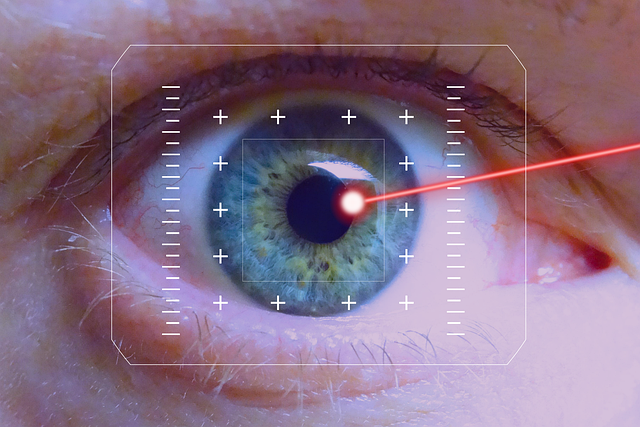When it comes to choosing a display, the debate between a high‑end television and a professional‑grade monitor is more than a matter of size or price. It is a discussion about how the pixels are arranged, how the human eye perceives detail at different distances, and how modern technologies like HDR and variable refresh rates influence the final image. In this article we dive into the core of an image comparison, examining the subtle differences that can turn an ordinary viewing experience into a truly immersive one.
Understanding Resolution Fundamentals
Resolution, measured in pixels, is the first metric that determines how much detail a screen can display. A 4K television, for instance, typically offers 3840 × 2160 pixels, whereas a 1440p monitor provides 2560 × 1440. However, the same pixel count on a larger panel leads to a lower pixel density, which changes how crisp the image appears to the viewer. This is where the image comparison starts: pixel count versus pixel pitch.
- Pixel Pitch: The distance between the centers of two adjacent pixels. Smaller pitch means more pixels per inch (PPI), leading to finer detail.
- Pixel Density (PPI): A direct measurement of pixels per inch. Higher PPI values generally improve clarity for close‑up tasks.
- Effective Resolution: The practical resolution perceived by the human eye at a given viewing distance.
Screen Size vs. Pixel Density: The Core Trade‑Off
A television usually spans from 55 inches to 85 inches, while monitors commonly range from 24 inches to 32 inches. When the same resolution is placed on a larger screen, the pixels spread out, making each one slightly bigger. For example, a 4K resolution on a 55‑inch TV yields about 80 PPI, whereas the same resolution on a 24‑inch monitor reaches roughly 179 PPI. Consequently, a monitor can present sharper text and finer graphics for a user sitting close, whereas a TV is optimized for distant viewing.
Viewing Distance: Where the Difference Becomes Visible
Human visual acuity declines with distance, so a larger screen with the same resolution can appear as clear as a smaller one when viewed from farther away. In a typical living room, a viewer sits between 3 and 7 feet from a 65‑inch TV, making the lower pixel density acceptable. In contrast, an office or gaming setup usually places the user within 1 to 2 feet of a monitor, demanding higher pixel density to avoid visible pixelation.
For optimal clarity, a 55‑inch 4K TV should be viewed at a minimum distance of 5.5 feet, while a 24‑inch 1440p monitor shines best when the user is no more than 2 feet away.
Practical Illustration: An Everyday Image Comparison
Imagine scrolling through a high‑resolution photograph of a city skyline. On a 4K TV, the skyline appears smooth, but a subtle halo of pixelated edges might be noticed when looking closely. The same photo on a 1440p monitor, however, shows crisp architectural lines and fine details because the pixels are packed more tightly. This simple image comparison highlights how the same content can feel different depending on the display medium.
Color Accuracy and Calibration
Beyond resolution, color fidelity plays a significant role in visualization quality. Professional monitors often come factory‑calibrated for a 99% sRGB or 100% DCI‑P3 color gamut, while many consumer TVs offer broader gamuts at the expense of accurate white balance. When comparing images, the subtle gradations of a portrait or the nuanced palette of a landscape may be rendered more faithfully on a calibrated monitor.
- Color Space: The range of colors a display can produce. Wider gamuts show more vibrant images.
- Calibration: The process of adjusting brightness, contrast, gamma, and color balance to match industry standards.
- Uniformity: Consistent color and brightness across the entire screen, which is critical for professional work.
High Dynamic Range (HDR) and Contrast
HDR technology enhances the dynamic range between the darkest and brightest parts of an image. While most modern TVs support HDR10 or Dolby Vision, many monitors provide HDR support in the form of HDR10+ or proprietary HDR modes. In an image comparison, HDR can bring out deeper blacks and brighter highlights, making scenes appear more cinematic on a TV. Conversely, monitors with high peak brightness and low black levels can deliver HDR for detailed editing tasks.
Refresh Rate and Input Lag
Resolution alone does not dictate motion clarity. A TV with a 120 Hz refresh rate can display smoother motion in sports or fast‑action movies. Monitors, especially those aimed at gaming, often boast 144 Hz or even 240 Hz rates, reducing input lag and delivering fluid gameplay. The image comparison between a 4K 60 Hz TV and a 1440p 144 Hz monitor becomes especially pronounced when watching a high‑speed sports event or playing a first‑person shooter.
Use‑Case Scenarios: When Each Display Excels
Choosing between a television and a monitor depends largely on how the user intends to interact with content. Here are some common scenarios:
- Home Entertainment: A 4K or 8K TV delivers an immersive cinematic experience with wide color gamuts, HDR, and integrated sound systems.
- Professional Design: A calibrated monitor with high pixel density, color accuracy, and low input lag ensures precise work on graphics, photography, and video editing.
- Gaming: Both TVs and monitors can be suitable, but the choice hinges on viewing distance, refresh rate preference, and the desire for HDR performance.
- Office Productivity: A monitor with a higher resolution per inch reduces eye strain during long editing sessions, while a TV can serve as a collaborative screen for presentations.
Future Trends Shaping the Image Comparison Landscape
Display technology is moving toward higher resolutions like 8K, higher refresh rates, and more efficient panel technologies such as Micro‑LED and Mini‑LED. At the same time, software solutions for spatial upscaling and adaptive HDR are becoming more sophisticated. These advancements will blur the line between what is considered a “TV” and what is a “monitor,” making the image comparison increasingly nuanced.
Another exciting development is variable refresh rate (VRR) and low‑latency modes that allow a TV to match the responsiveness of a gaming monitor. As manufacturers integrate these features, consumers will find it easier to switch between tasks without compromising on visual fidelity.
Final Thoughts on Choosing the Right Display
When comparing an image on a television versus a monitor, the most critical factors are the intended viewing distance, the type of content, and the importance of color accuracy versus motion fidelity. A television offers a grand, immersive canvas for movies and sports, while a monitor provides the detail and responsiveness required for creative work and gaming at close range.
Ultimately, the best choice is one that aligns with your visual priorities. By understanding the interplay of resolution, pixel density, color science, HDR capability, and refresh rate, you can make an informed decision that turns every image into the best possible visual experience.




